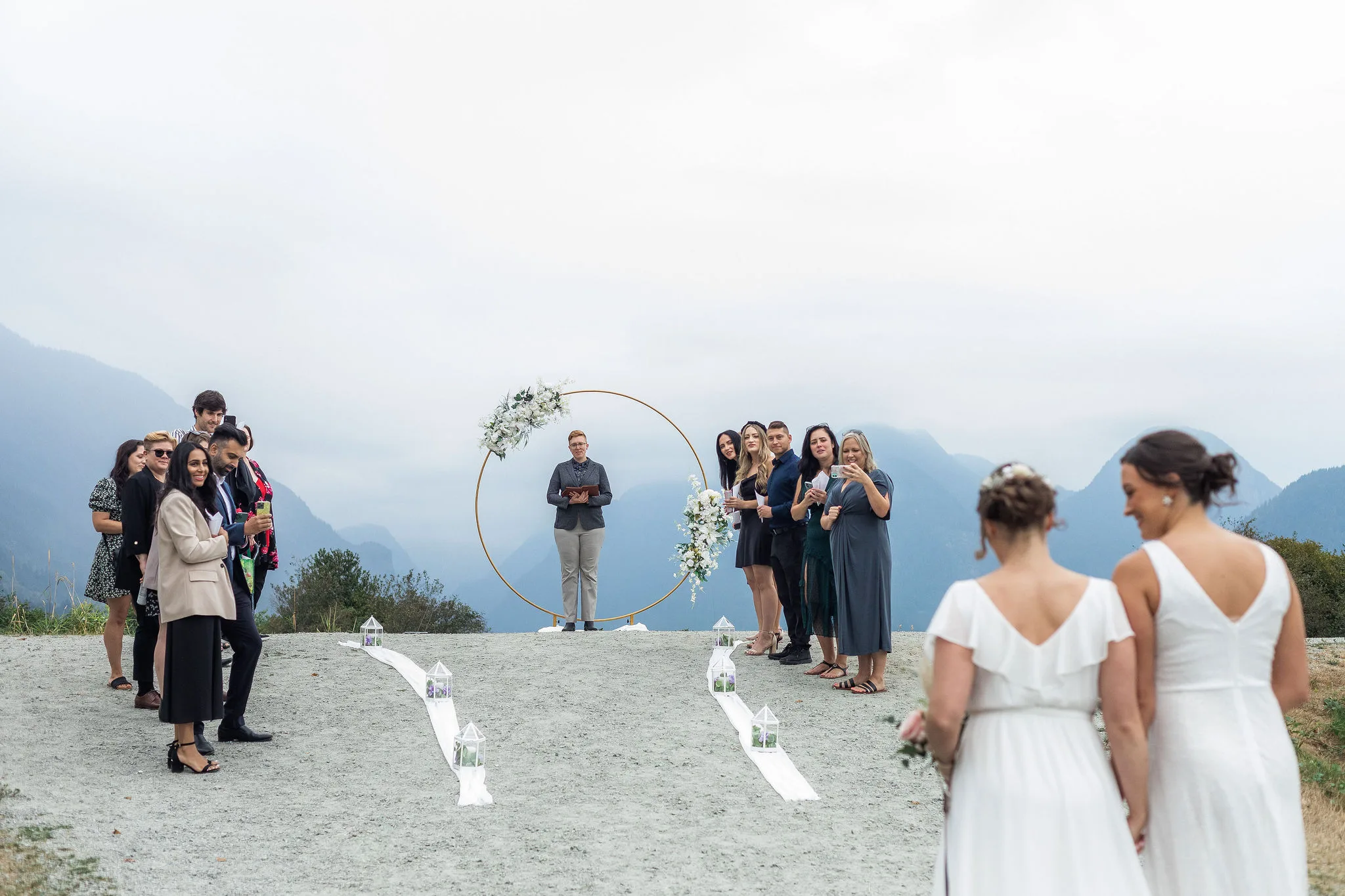Unless you’re planning a wedding, you may not have given too much thought to the wedding processional. Somehow, the couple of the hour and their wedding party just get to the front of the venue in time for the ceremony to start! But turns out, a little more planning goes into a ceremony processional walk.
What is a wedding processional?
A wedding processional is the order in which the important people of a wedding – usually the couple and their wedding party – make their way down the aisle to the front of the ceremony space. Or, in other words, how they will process down the aisle.
The processional includes everyone who will be coming down the aisle at the beginning of the wedding. Sometimes it’s just the couple or the couple and their wedding party, and other ceremonies include parents, honoured guests and even the wedding officiant.
When planning a processional, you not only have to think about who to include and the order in which they will process; you also will need to consider the music you’ll want played and the timing. What song will play when the wedding party comes down the aisle? Do you want a different song for the couple or the parents? How long will it take for everyone to get to the front?
Of course, if you’re planning to include children, pets or elderly folks in your processional, you may need to make extra accommodations for them. For example, what will you do if your ring bearer refuses to go down the aisle or stops midway? Who is walking your dog down the aisle and where is your dog going after the ceremony? And who is escorting grandma?
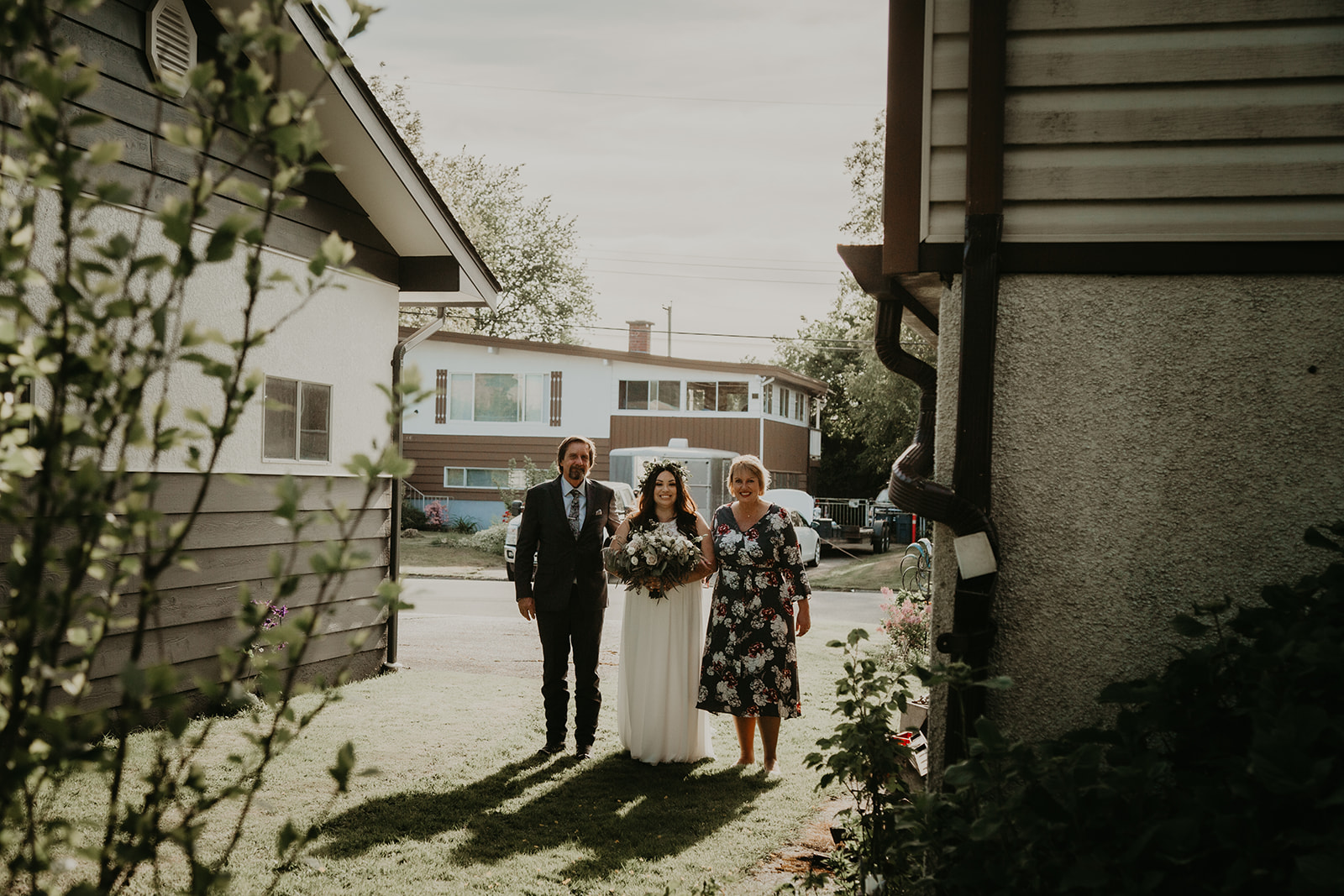
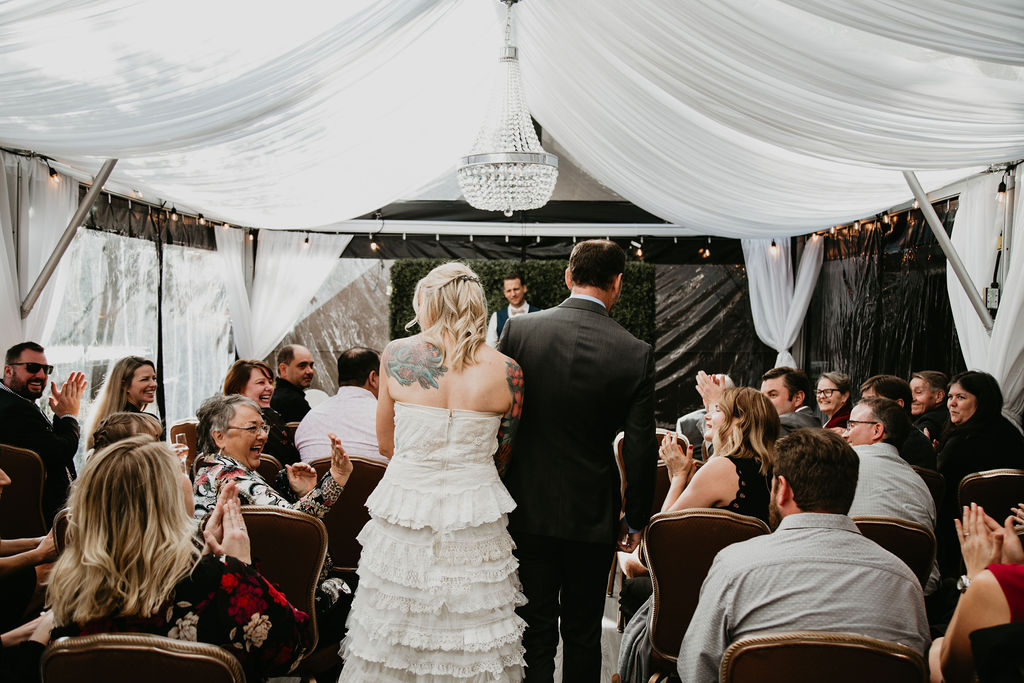
What is a recessional?
The opposite of a processional is a recessional. A recessional is how everyone at the front of the ceremony – the newlyweds, their wedding party and (optionally) honoured guests – will make their way back up the aisle after the ceremony is over. It’s the order in which the couple and their party recess back up the aisle.
Does every wedding have a processional?
Most larger wedding ceremonies do include a processional, but it’s not mandatory. Obviously the nearly-weds and their party will need to make their way to the front of the ceremony space somehow, but you can opt out of a traditional or formal processional if you don’t want one. In fact, you could skip it altogether and start your ceremony by already standing at the front when guests arrive!
You could also choose for only certain people to be part of the processional. For example, you could have your wedding party already seated at the front of the ceremony or enter through the side door, and only the couple process down the aisle.
With smaller weddings, such as intimate elopements, we usually don’t see a processional. As these are smaller affairs without a formal aisle, there’s no need for a traditional processional. Most elopement couples prefer a “gather and wed” approach where they simply arrive at a spot with their officiant and guests all together.
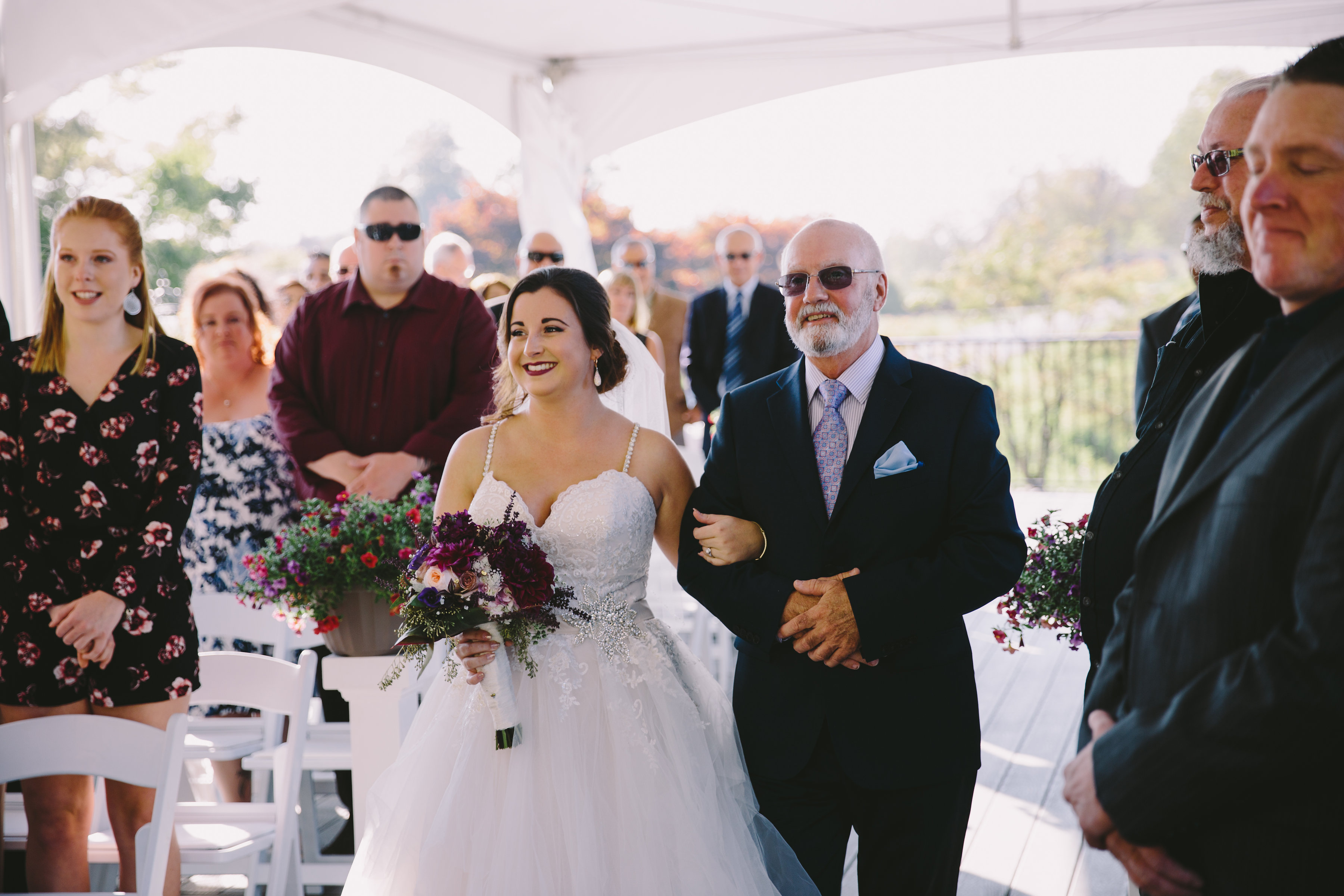
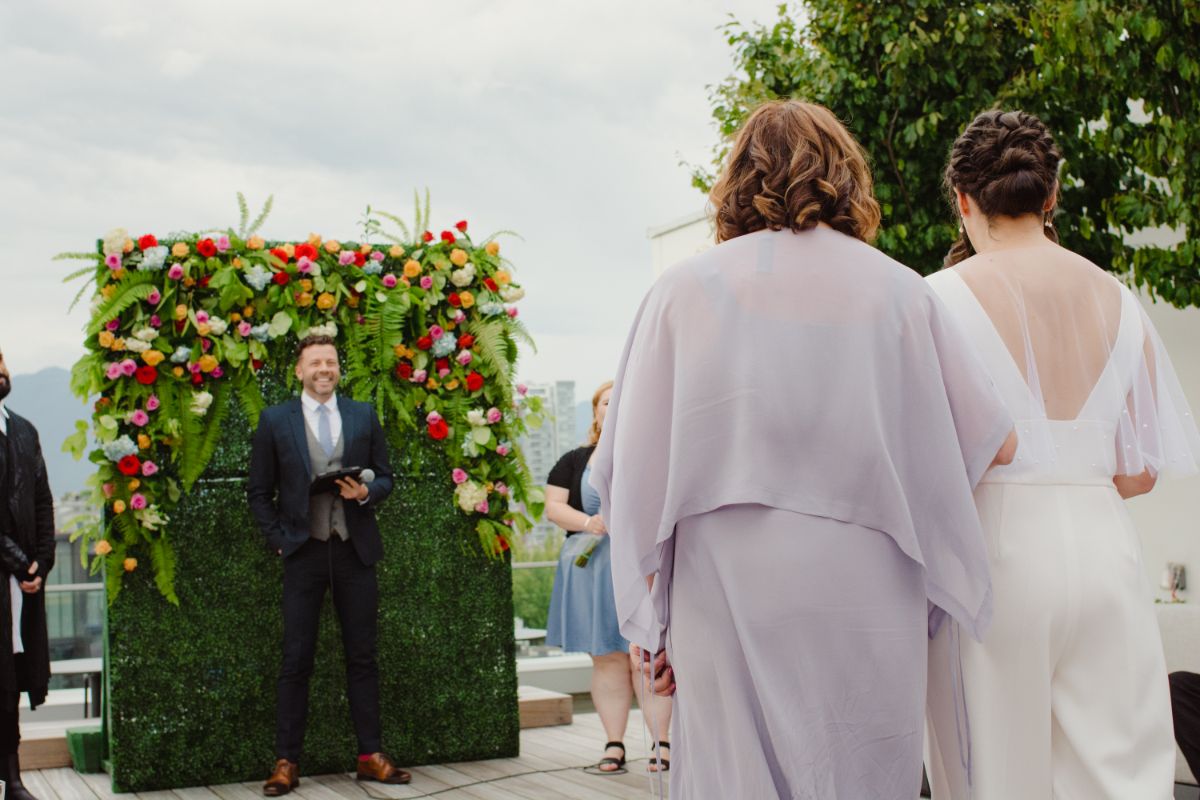
What is the traditional processional order?
A traditional processional will vary based on where you are getting married and if you’re getting married under a religious institution. Check out 6 common processional orders, including traditional and religious variations.
The typical processional we’re used to seeing in movies and at most North American weddings is some variation of the following:
- The officiant, groom and groomsmen enter (either by coming down the aisle or from the side)
- The bridesmaids come down the aisle
- The ring bearers and/or flower children come down the aisle
- And finally the bride, escorted by her father, processes down the aisle
Of course, a typical or traditional processional order doesn’t work for all weddings and all couples – many wedding don’t have a bride and a groom, or bridesmaids and groomsmen!
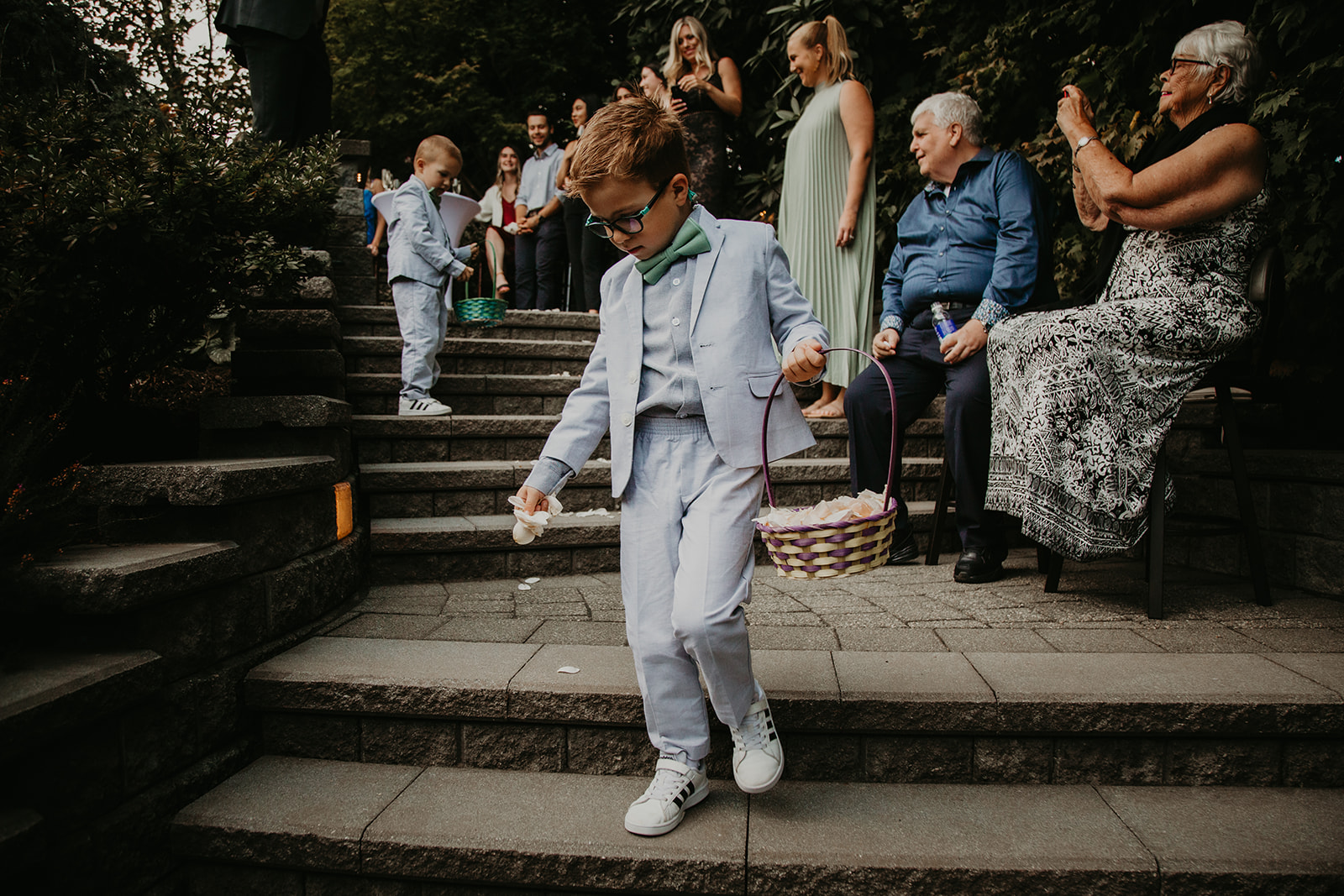
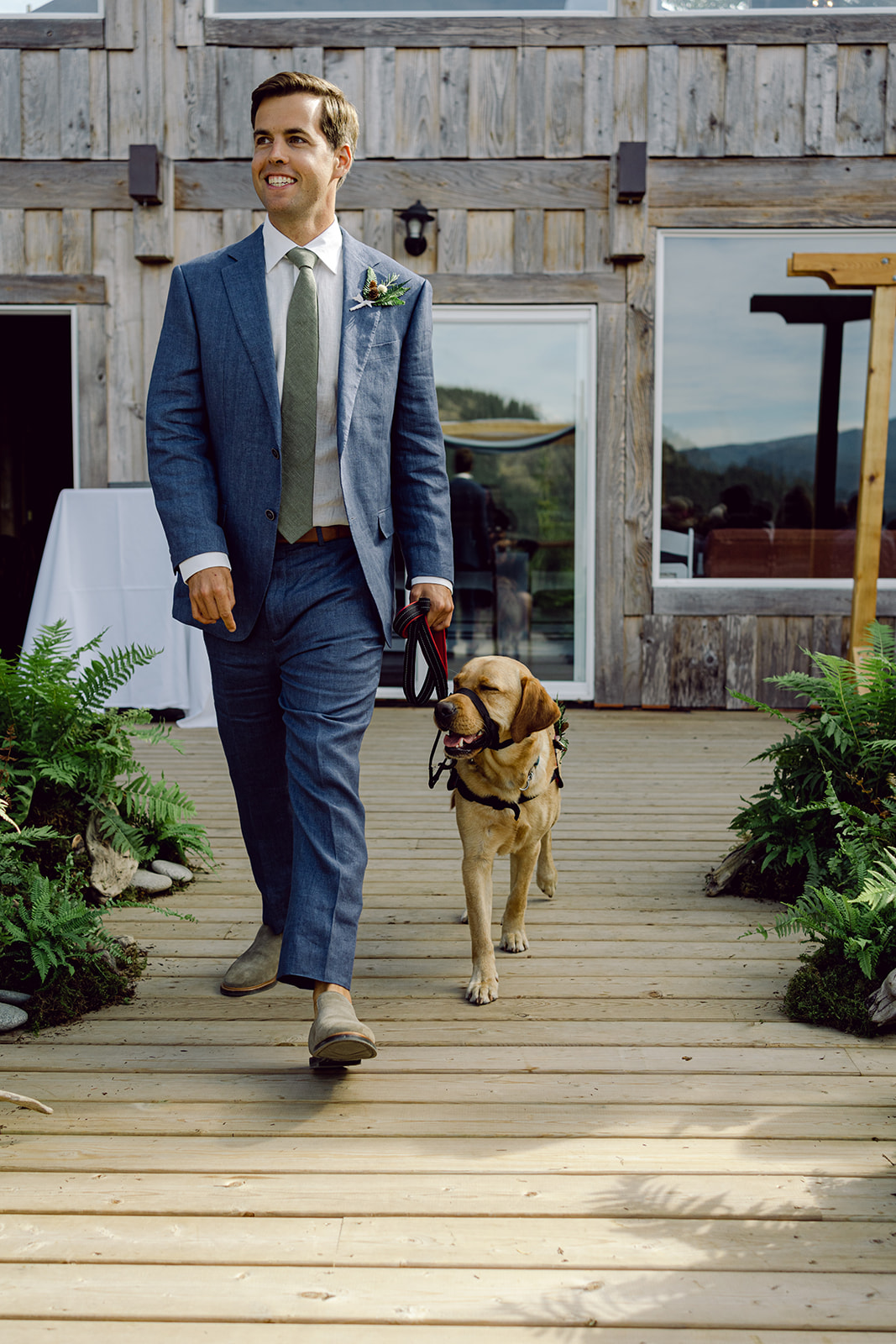
What are creative or modern ways to process down the aisle?
If the traditional processional order doesn’t work for you and your wedding, go ahead and change it! There are no rules to how you enter your own ceremony. You can start with one of the traditional orders and tweak it or create your own.
For inspiration, check out 8 unique ceremony processional ideas to enter your wedding!
Do you follow the same order for the recessional?
No, you do not need to follow the same processional order for your recessional. For example, it might be kind of odd for the bride and her father to exit the ceremony together instead of the bride and her new partner!
The recessional is generally less formal than the processional and much faster. It usually begins with the newlywed couple exiting together (to uproarious applause!) followed by their wedding party, often in pairs.
Some couples also choose to include their parents or honoured guests who were seated in the first row in the recessional. Not only would this give your loved ones another special moment of recognition, it also helps ensure they don’t get trapped behind all of your guests trying to leave the ceremony space since they were seated the farthest from the exit!
No matter what order and who you choose to include in your recessional, make sure you practice the recessional at your wedding rehearsal so everyone knows how they’ll exit the ceremony.
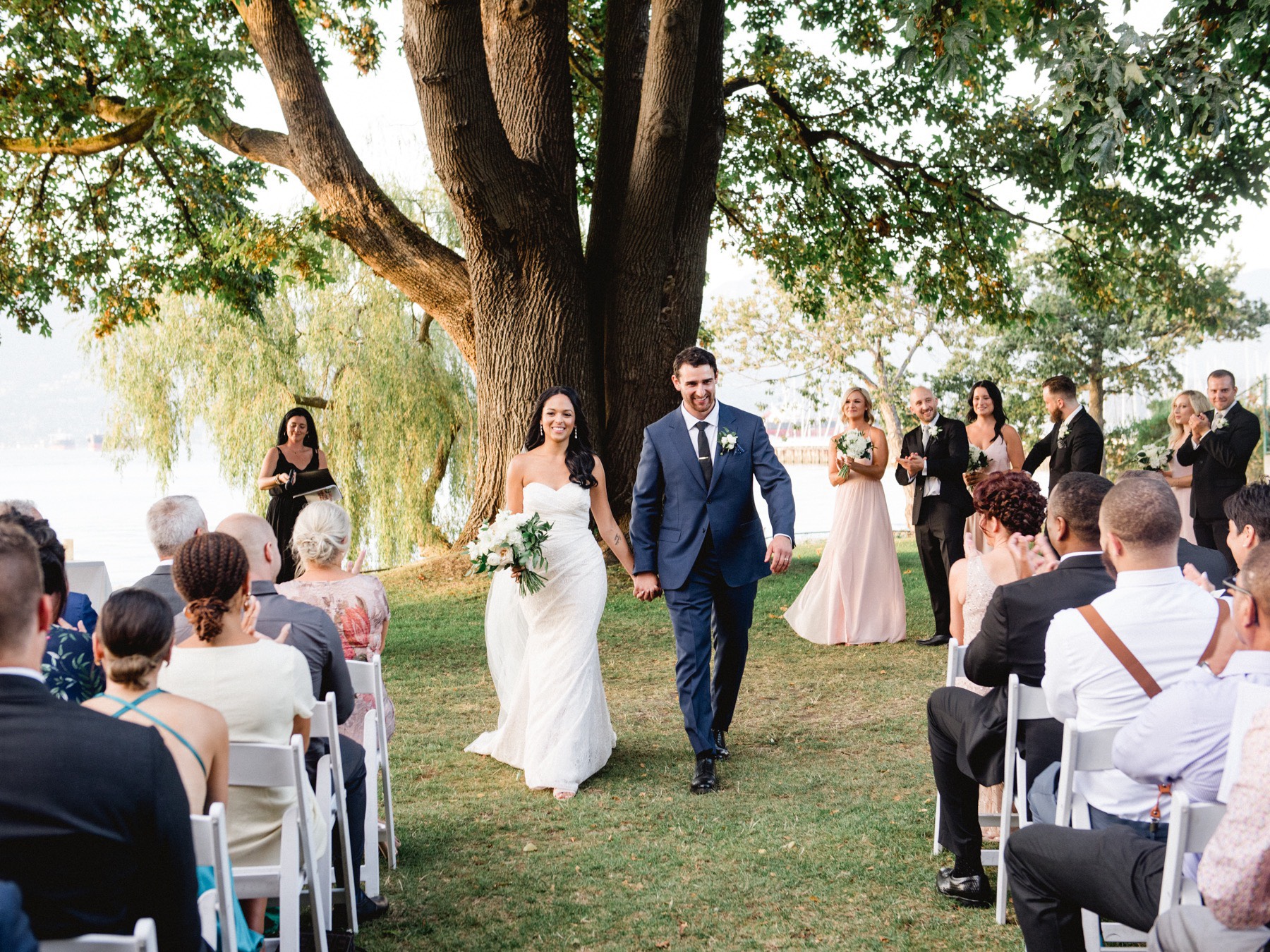
How do we decide which processional order is right for our wedding?
Start by looking through the 6 common processional orders and 8 creative processional ideas together. Then, do a gut check. How do those options feel to you? Is there one option you’re leaning towards or some options you know won’t work for you? Remember, you don’t have to go with a traditional processional if it doesn’t fit with your beliefs or ceremony style.
Consider what is most important to you. Are there any important people you want to include in your processional, such as your children, grandparents, chosen family or pets? Is it important that both members of the couple have a special moment to walk into the ceremony? Do you want to include your parents? Would you prefer to walk in alone, together or with an escort?
Next, think about your specific ceremony logistics. How large is your venue? A long aisle may mean you need to send wedding party members down in pairs to save time. Or a narrow aisle may mean you can’t walk in with both of your parents. How many wedding party members do you have? How many guests do you have? How long is your ceremony? All of these things can help you plan a processional order that makes sense for your ceremony.
Lastly, and most importantly, talk to your wedding officiant (and wedding planner, if you have one). Your officiant has seen dozens or even hundreds of processionals before and will be able to give you feedback and suggestions. They can help you navigate tricky family dynamics and honour your beliefs so you can walk into your ceremony feeling your best.
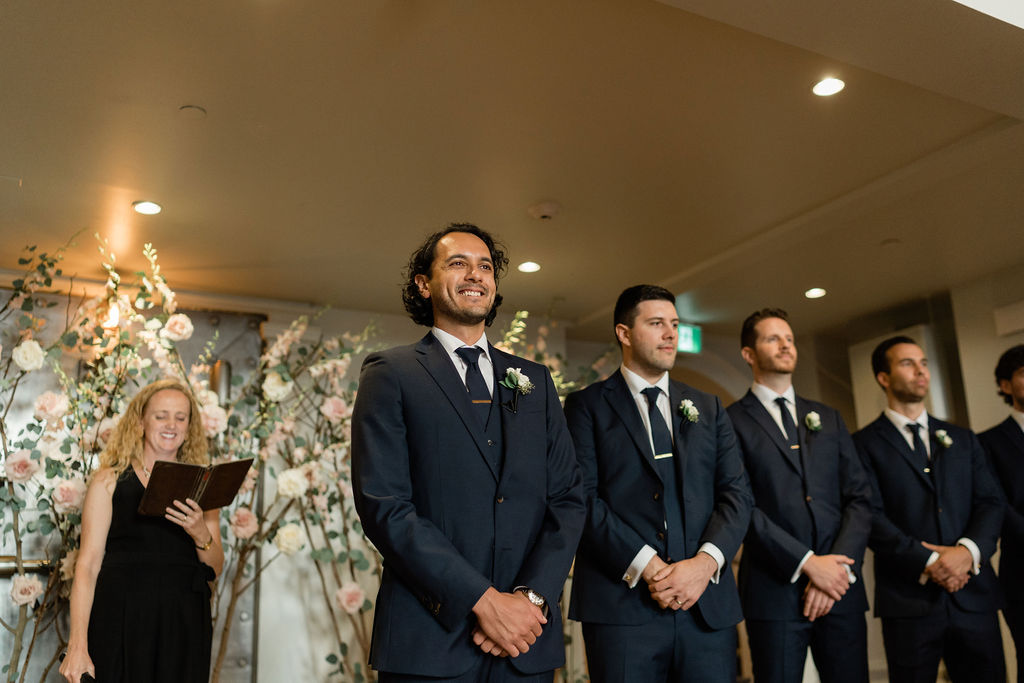
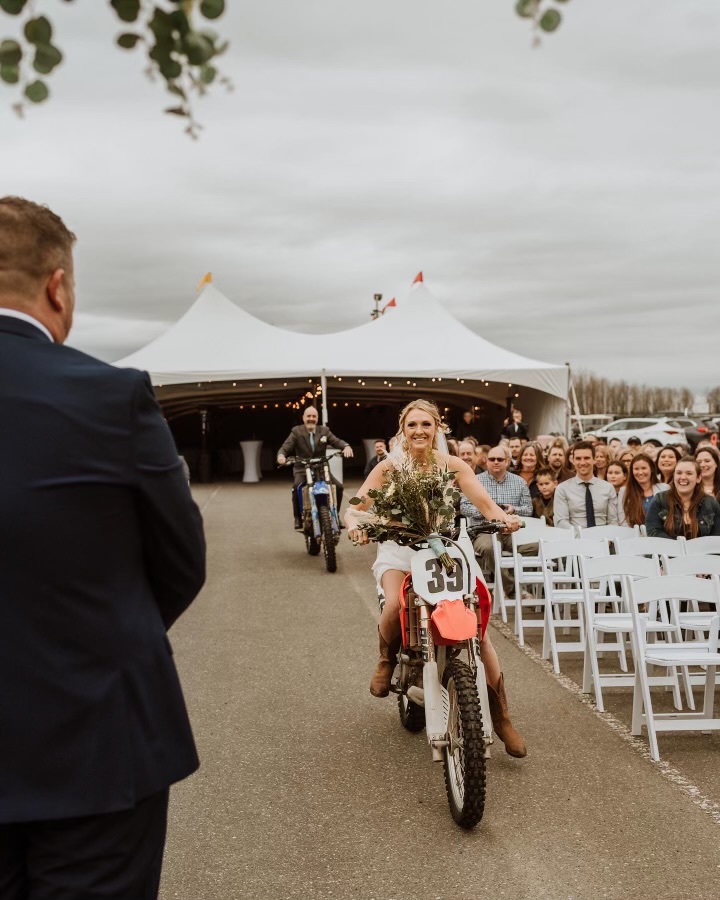
5 top tips for a seamless ceremony processional
1 – Decide on the order ahead of time
The way you walk into your wedding – and into your marriage – is important! Take some time with your partner to discuss what is important to you and what people and what beliefs you want to honour through your processional. Have this discussion ahead of time, and not in furious whispers on the morning of your wedding.
2 – Communicate your wants to your wedding officiant and planner
Once you’ve decided on a processional order for your ceremony, make sure you share your choices with your wedding officiant and wedding planner/coordinator. They can give you feedback and ensure your vision for the processional comes to life. If they don’t hear otherwise, they may assume you’re defaulting to a traditional processional.
3 – If you’re going outside of the box, let people know ahead of time
If you’ve decided to do something less traditional and more creative for your processional, good for you! But if that impacts your wedding party or other important people in your life, you’ll want to let them know ahead of time.
For example, if you’ve decided you’ll be walking down the aisle alone but your parents assumed they’d be escorting you, you’ll want to give them lots of notice. You can be firm in your decision but still deliver the news kindly and allow them time to process their feelings, rather than springing it on them on the wedding day.
4 – Practice your processional during your wedding rehearsal
If you’re getting married in anything other than an intimate elopement, you need to have a wedding rehearsal. And part of that rehearsal should be practicing the processional (and recessional!) with everyone involved. That way, everyone will know where they need to go and when on the big day.
5 – Smile your way down the aisle!
By deciding on a processional order that suits you, communicating it to your vendors and loved ones, and practicing it with everyone at your rehearsal, you’re all set to walk down the aisle with no stress, knowing you’re entering your marriage exactly as you intended!
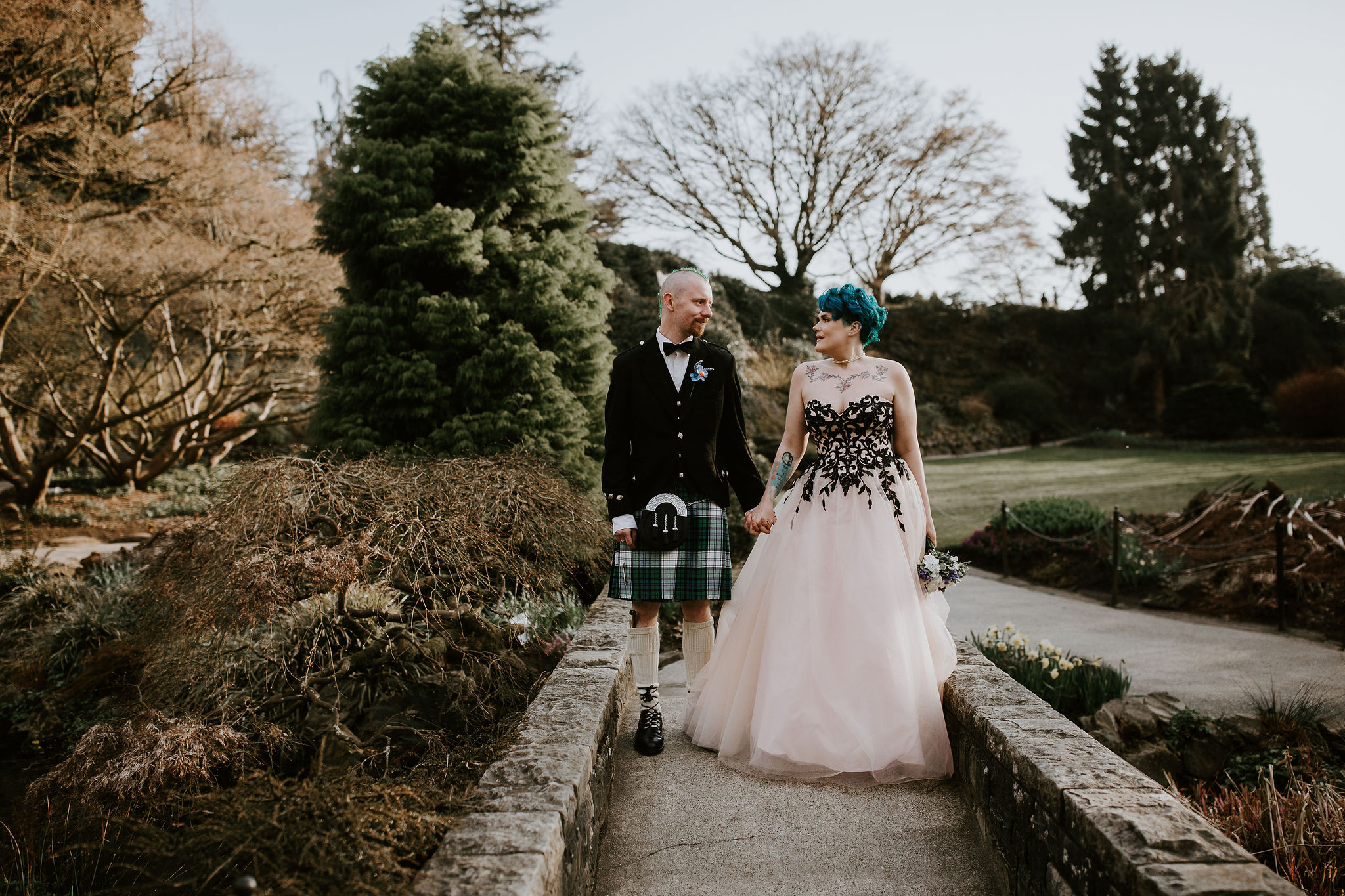
We’d love to know: How will you be processing down the aisle at your wedding?
featured photo by John Bello Photography
